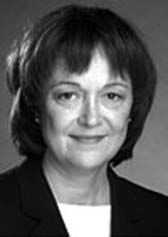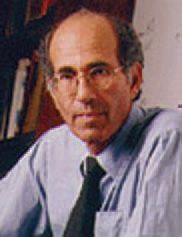
Physiology News Magazine
The Nobel Prize
Tim Jacob traces the route that Linda Buck and Richard Axel took to claim one of the major uncollected prizes in sensory science – the secrets of the olfactory system
Features
The Nobel Prize
Tim Jacob traces the route that Linda Buck and Richard Axel took to claim one of the major uncollected prizes in sensory science – the secrets of the olfactory system
Features
Tim Jacob
University of Cardiff, UK
https://doi.org/10.36866/pn.58.12


This year’s Nobel Prize for Medicine and Physiology was shared by Linda Buck (57) and Richard Axel (58) for their discovery of the olfactory receptor gene family.
In 1991, after about 8 years of research effort, they published their landmark paper in Cell in which they reported that they had succeeded in cloning 18 different members of an extremely large multigene family that, they said, ‘may encode odorant receptors’. This family we now know is the largest so far discovered and occupies about 3% of the human genome. In order to achieve this breakthrough they made some educated guesses that narrowed the odds – in other words luck played a part.
Following publication they went their separate ways. Axel remained at Columbia where he has been since his undergraduate studies. Buck moved to Harvard for 10 years and then westward in 2002 to the Fred Hutchinson Cancer Research Center in her home town, Seattle. Although working separately, they both demonstrated, in different publications, that each olfactory receptor neuron (ORN) expressed only one type of olfactory receptor and that each ORN expressing the same receptor sent its axon to the same place in the olfactory bulb. Buck went on to publish the idea of a ‘combinatorial code’ that is the currently accepted view of how different odours are discriminated.
The secrets of the olfactory system had long been one of the major uncollected prizes in sensory science. Over the years there had been many theories attempting to explain how/why molecules smell including molecular vibration, piezo electric currents, membrane diffusion pores and molecular shape. Most of them were empirical and did not lend themselves to scientific test. It was the advent of molecular biology and, in particular, polymerase chain reaction (PCR) that finally unlocked the secrets of the olfactory system.
From 1982-1991 Linda Buck was a postdoctoral fellow in Richard Axel’s lab. The Howard Hughes Medical Institute (HHMI) was supporting both of them during this period. To understand the olfactory system it was necessary to discover how the system responded to thousands of different molecules of different shapes and sizes. Did it achieve this with a restricted set of promiscuous receptors or a large number of relatively specific receptors? And second, how did the brain utilise these responses to discriminate between odours? In 1983, Kary Mullis at Cetus Corporation conceived of a way to start and stop a polymerase’s action at specific points along a single strand of DNA. The result was PCR for which he was awarded the Nobel Prize for Chemistry in 1993. So, instead of hunting for the receptor proteins directly, Axel and Buck used PCR to look for genes that contained instructions for proteins found only in the olfactory epithelium. It was a technique in its infancy and at first their efforts came to nothing. Looking back Axel has commented that this was because of the large number of odorant receptors, each of which was only expressed at a very low level. Finally, Buck made the breakthrough by making three assumptions. The first was that the odorant receptors were likely to be members of the 7transmembrane G-protein coupled receptor family. The second was that the odorant receptors themselves should exhibit significant diversity and belong to a multigene family and the third that their expression be limited to the olfactory epithelium. Homologues of the 7-TM domain superfamily were amplified from olfactory epithelial RNA. Using restriction enzymes to digest the PCR product they looked for fragments that consisted of a mixture of DNA sequences arguing that a multigene family would generate a set of DNA fragments whose molecular weight would be far greater than the original PCR product. The restriction digestion of a single species of DNA, on the other hand, would generate a set of fragments whose molecular weights would sum to that of the original PCR product.
Stuart Firestein, a colleague at Columbia and another major player in olfactory research has pointed out that this work would probably not have been possible without HHMI support: ‘It would have been hard to do this if you were required to produce regular publications to support your next grant,’ he said. Buck was a 44-year old postdoc at the time of the publication of their Cell paper with 10 papers to her credit – only three as first author. The HHMI has nurtured 13 Nobel Prize winners since it was established in 1984 and Columbia University itself has produced a steady stream of Nobel Laureates, 72 in all. Twenty-one of these are in Physiology and Medicine, including Eric Kandel (2000).
